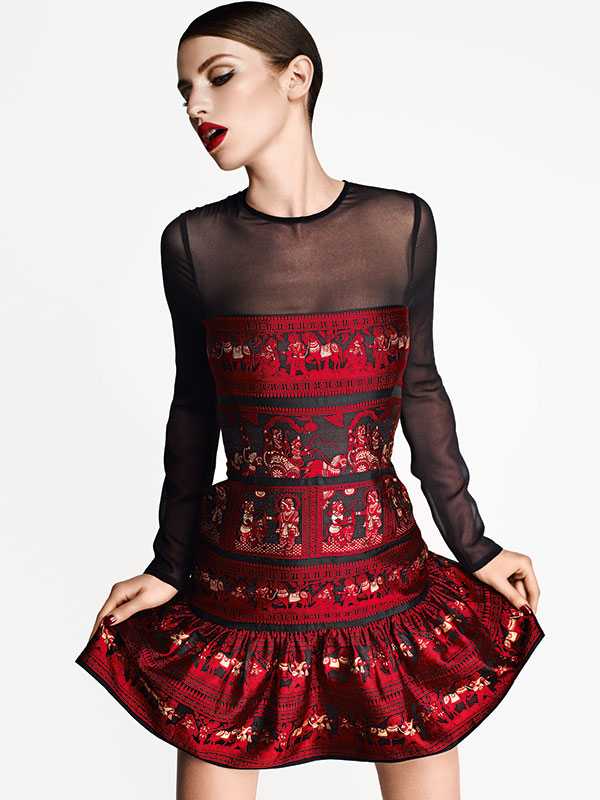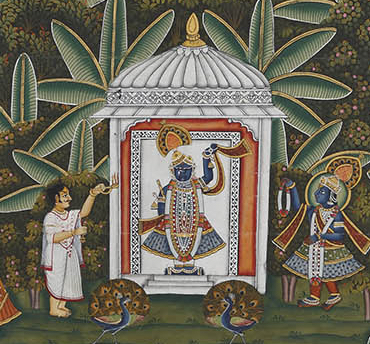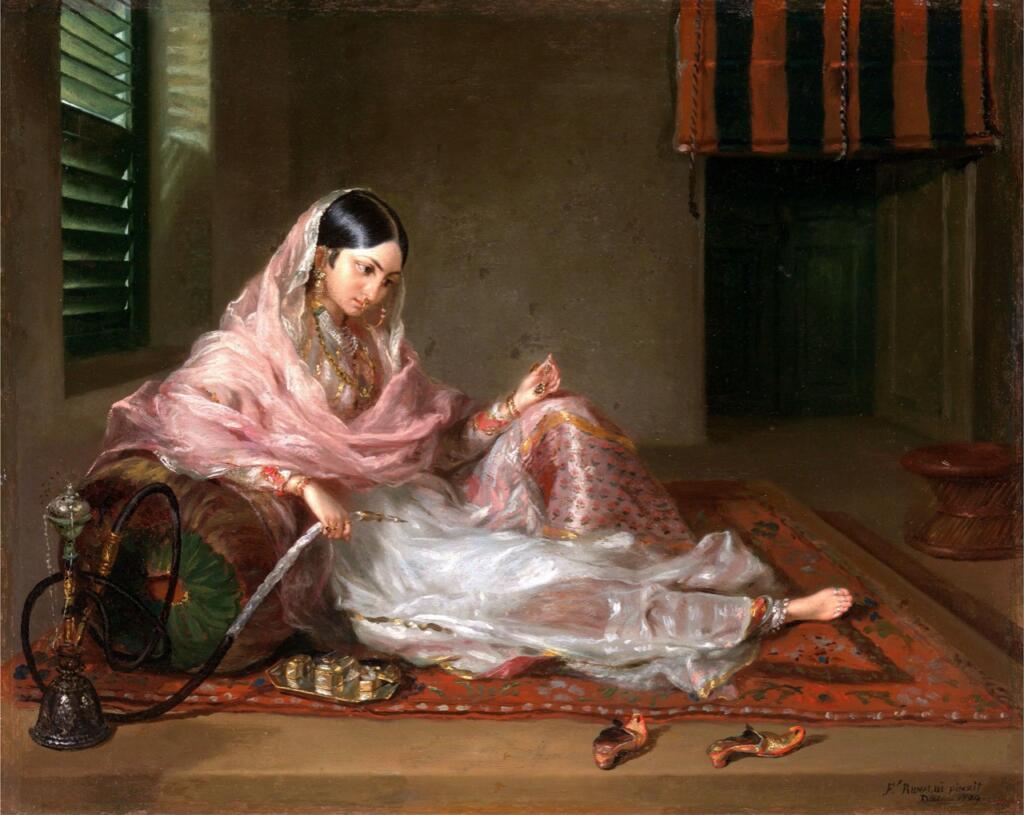
A woman in fine Bengali muslin; Dhaka, 18th-century/Francesco Renaldi/Wikipedia Creative Commons
Majestic colonial mansions whose walls whispered stories, labyrinthine markets offering delights at every corner, quaint little tea rooms and bakeries that sparked a million conversations, glittering jazz-age clubs delirious with glamour — Calcutta after Independence was all kinds of magical. Pulsating with charm, it was a hotbed of endless inspiration for creatives, artists and just about anyone with an imagination. Add to this the panoply of Bengal’s glorious textiles—from soft muslins to intricate jamdanis to rich balucharis to ingenious kanthas—and it’s easy to see how this city came to nurture some of country’s brightest design talents and most resilient style legacies.
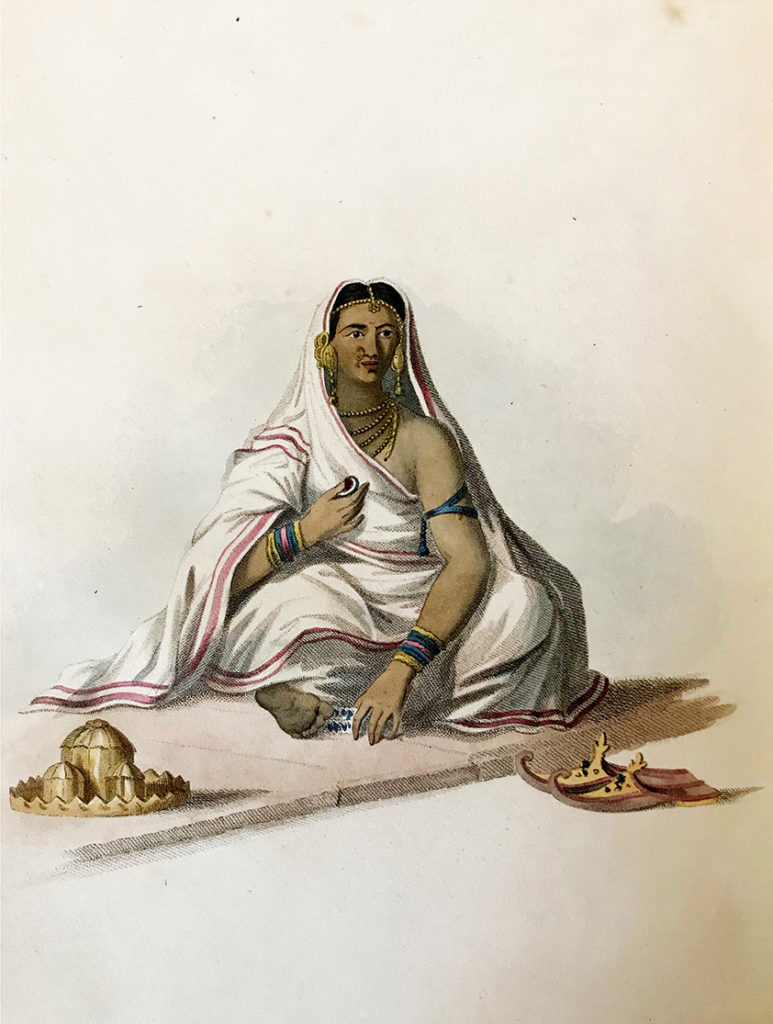
‘A Woman Of Distinction’ from ‘Costumes of Hindostan’ ©️Sarmaya Arts Foundation
Sense and Sensibility
An allusion to Calcutta’s fashion sense brings to mind a certain light-footedness, and an easy sexuality and longing, tinged with colonial nostalgia—think Madhabi Mukherjee as Satyajit Ray’s Charulata, dressed in her soft striped saris, worn in the Bengali drape, teamed with ruffled Victorian-inspired blouses. Or more recently, Tabu as Ashima in Mira Nair’s The Namesake comes to mind, trying hard to assimilate into a foreign culture while holding on to the familiarity of her shuteer (cotton) saris.
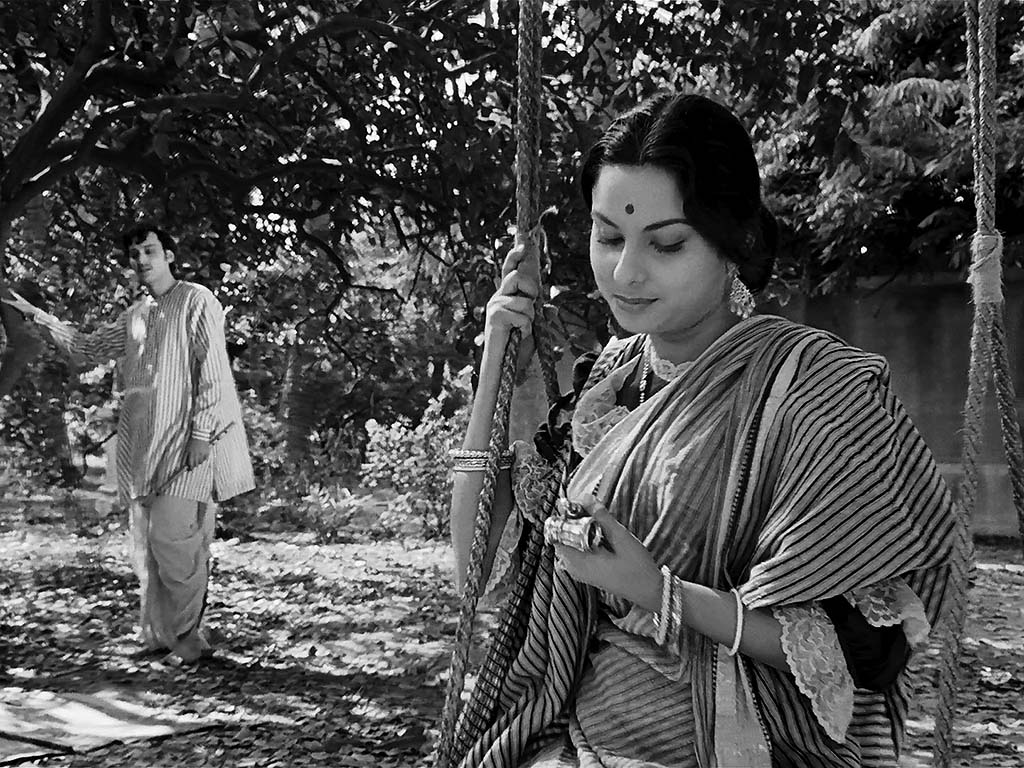
Still from the film ‘Charulata’, 1964
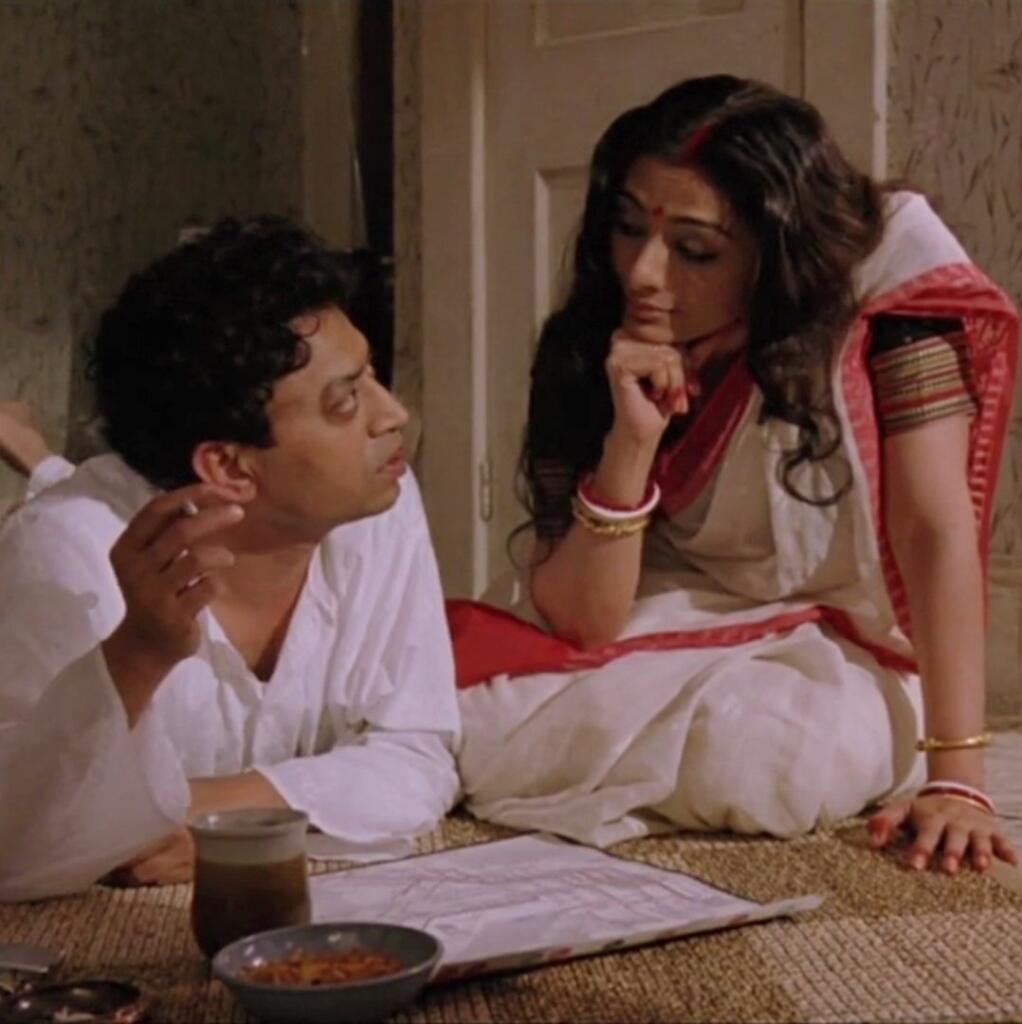
Still from ‘The Namesake’, 2006
It also brings to mind the self-assuredness of Jnanadanandini Devi, a daughter-in-law of the Tagore family, who in addition to leading a number of significant reformist and feminist movements, is credited with contemporising the sari. She devised new of ways of sari draping, adding the blouse and the coat (inspired by her travels to England), making it functional for the times. This confidence in the way the women chose to dress and present themselves can also observed in vintage photos of the time.
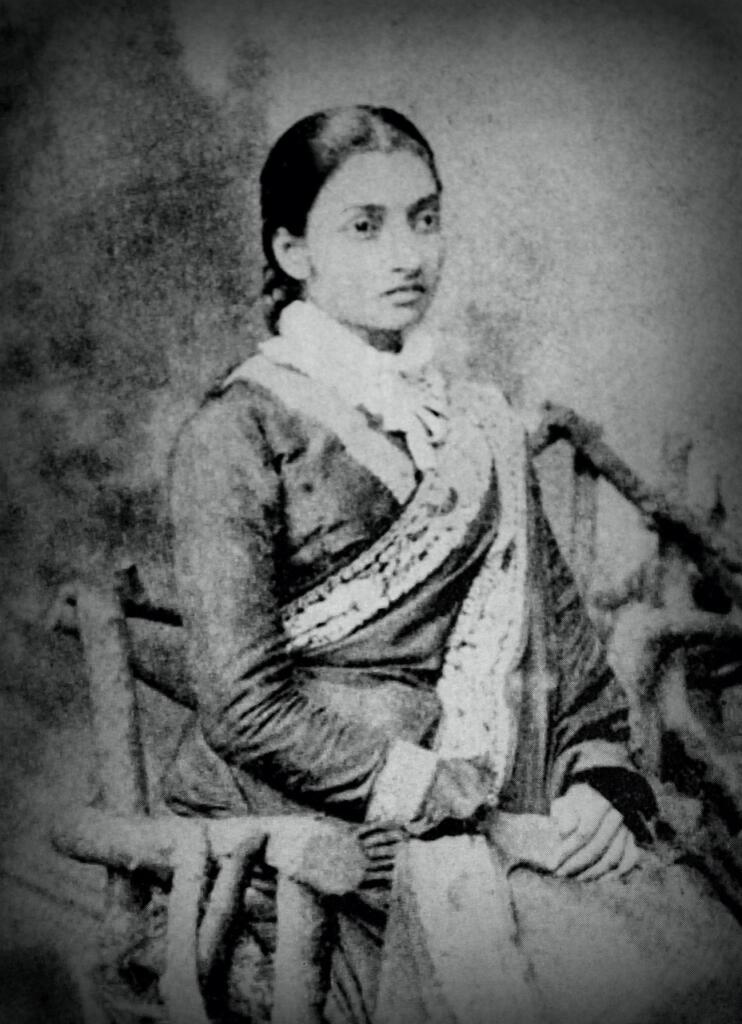
Jnanadanandini Devi/Wikipedia Creative Commons
Modern-day Calcutta’s relationship with fashion shows a similar reconciliation of paradoxes—where women deftly mix the high with the low, simultaneously courting simplicity and ostentation, and artfully layering their jewellery, makeup and prints, all while skillfully dismantling fashion and beauty norms.
Around the early Noughties, the newly christened Kolkata began to assert herself as a centre for high fashion—one with a unique vocabulary, informed by a rich past, and the inevitable proliferation of global brands and boutiques. Alongside these, traditional sari shops like the RMCA Bashak and Adi Dhakeshwari, housed in charming old buildings filled with the classics from the balucharis to the tangails continued to thrive.
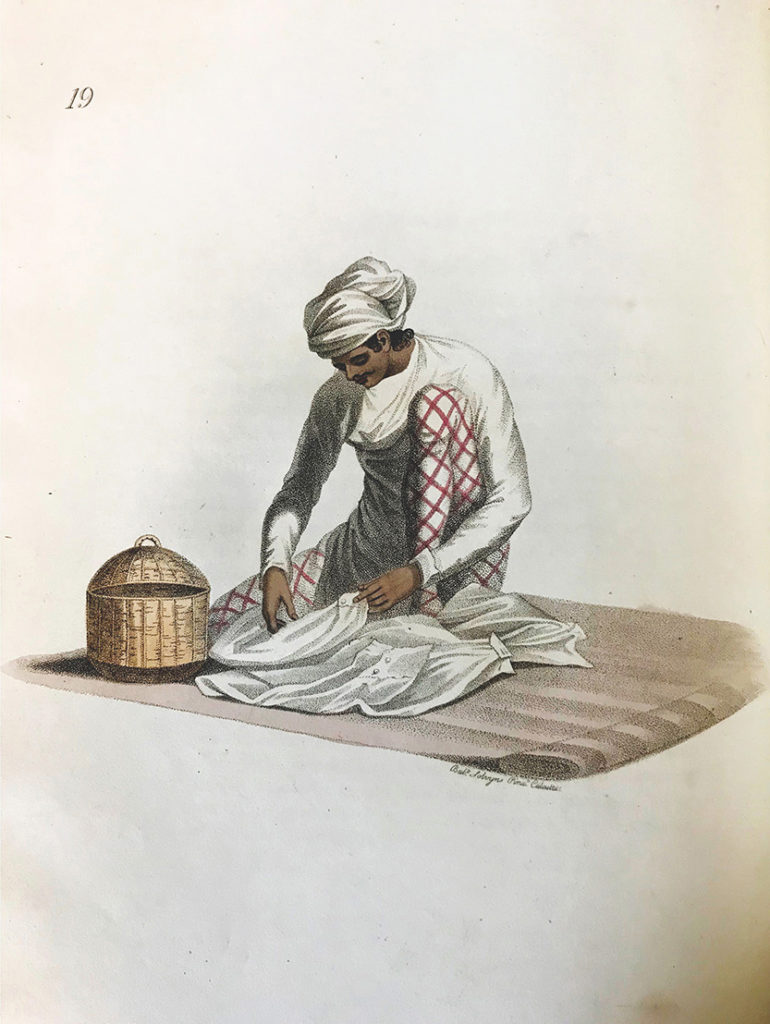
‘A durzee or tailor’ from the rare book ‘Costumes of Hindostan’ ©️Sarmaya Arts Foundation
The era also saw the emergence of a new class of fashion designers. Sabyasachi Mukherjee, Anamika Khanna, Kallol Datta, Kiran Uttam Ghosh, Paromita Banerjee and Pranay Baidya, among others, whotogether reflect different aspects of the city’s culture and co-create what is a uniquely Kolkata aesthetic, distinct from those of Delhi and Mumbai.
Fashioning the City of Joy
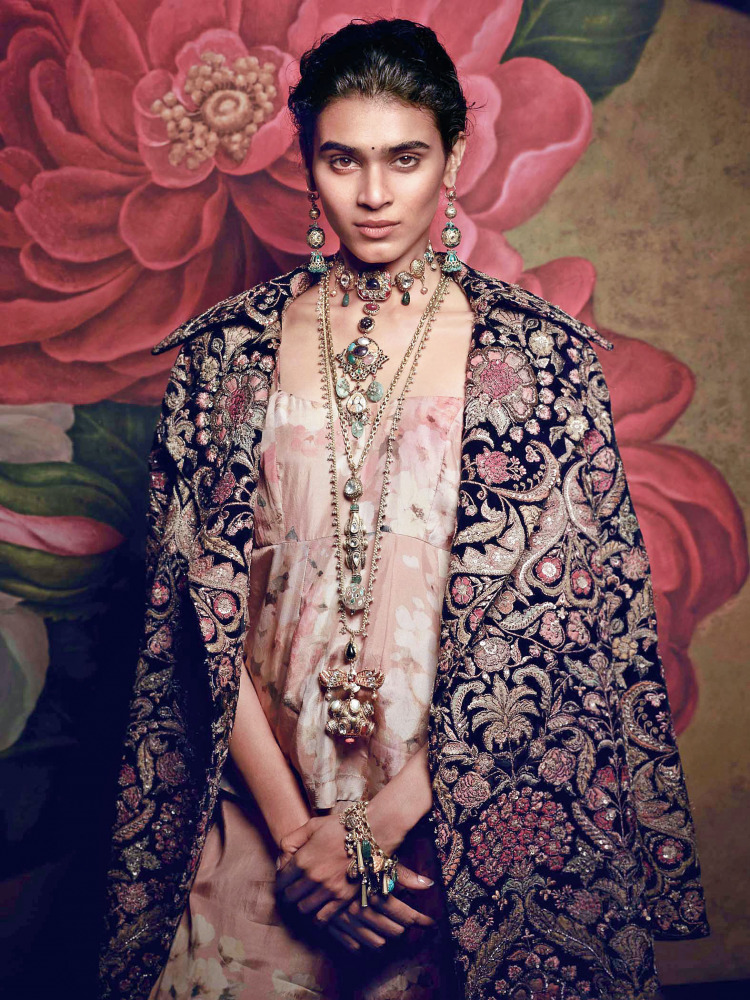
Sabyasachi for Bergdof Goodman, 2020
Sabyasachi Mukherjee, who launched his eponymous label 20 years ago, has been the front-runner among Kolkata’s designers, instrumental in placing the city firmly on the international fashion map, what with a fine jewellery line for Bergdorf Goodman, a long-standing creative partnership with Christian Louboutin and a H&M collaboration under his belt, not to mention a decade-long monopoly on the country’s designer bridal market. His fashion is characterised by the use of rich textiles and embellishment, jewel tones and painterly prints. He works closely with weavers in Murshidabad, Varanasi and parts of Andhra Pradesh and Orissa to produce his exquisite pieces, but its Kolkata that has his heart. Over the years, his designs have paid homage to everything from the artistry of its mansions to the chaos of its alleys, from its sumptuous past to its piquant present.
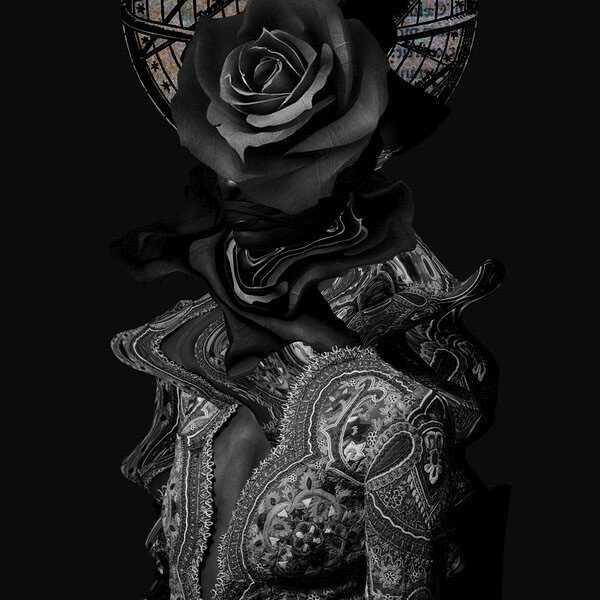
Anamika Khanna Couture Collage by Sato Masahiro
One of Indian fashion most respected couturiers, Anamika Khanna has a different but equally rooted approach to design. Khanna’s style is experimental, characterised by a boho gypsy element and an artful layering of textiles. Her sculptural capes, jackets and coats are heavy on surface texture achieved through fabric manipulation and intricate handwork. Khanna has often credited Kolkata for inspiring her creatively and she’s not alone in this.
She’s joined by designers like Paromita Banerjee, who combines traditional handwoven techniques like jamdani with the eclecticism of street fashion; Santanu Das of Maku who works with a restrained colour palette of white, black and indigo to tell textile stories; and Kallol Datta, who uses fashion to subvert norms of gender, culture and beauty. Datta favours the city for another, entirely unexpected reason. He tells us, “Living and working out of Kolkata allows me to work anonymously, under the radar. That in turn is reflected in my work—unapologetic when put under the spotlights.”
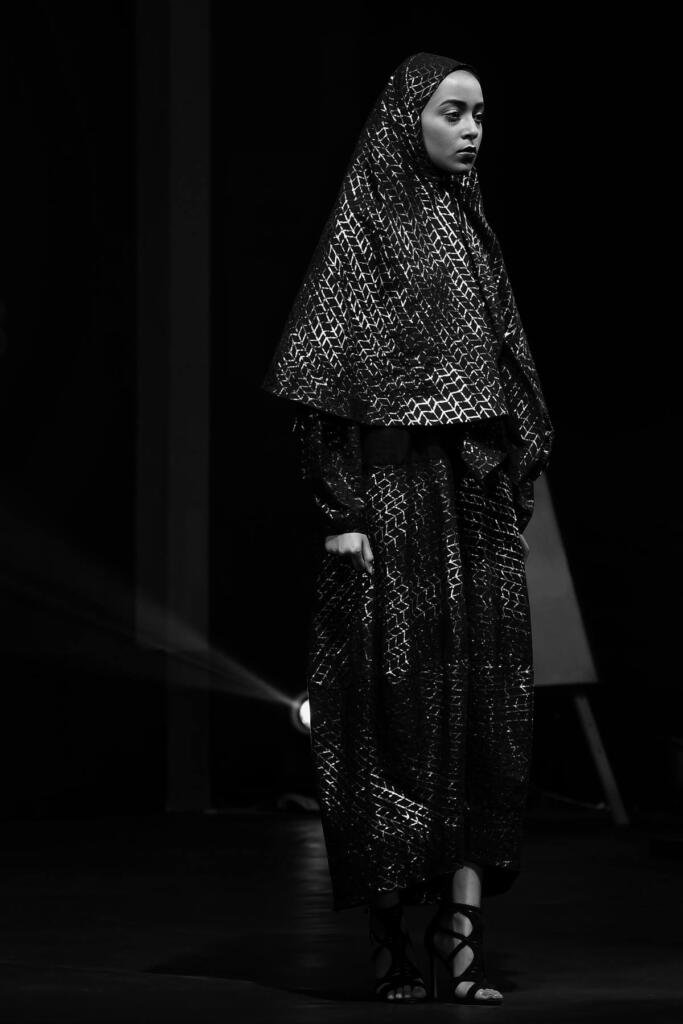
Kallol Datta, 2017
Queen of Textiles
Bengal’s storied textile heritage is still evident as we head north from Kolkata to handloom hubs like Shantipur, Phulia and Beldanga on the outskirts. Textiles were Bengal’s most valuable exports for centuries and the industry peaked under the Mughals. In the 17th and 18th centuries, muslin was exported from Dhaka to Europe and the Middle East. Bengal muslins were renowned for their finetexture and superior drape. Sufi poet Amir Khusrau refers to the textile in his text Nihayatul Kamalsaying, “A hundred yards of it can pass through the eye of the needle, so fine is its texture, and yet the point of the steel needle can’t pierce through it easily. It’s so transparent and light that it looks as if one is in no dress at all but has smeared the body with pure water.”
Rajib Debnath, a sixth-generation master muslin weaver from Kalna (about 100 kilometers from Kolkata), says, “Between 1864 and 1867, the East India Company went on a rampage cutting off the thumbs of weavers to kill the Bengali muslin industry and thereby generate demand for Manchester cotton.” Debnath’s family had to quit weaving, flee their home in Noakhali (present-day Bangladesh) and migrate to Kalna, where they returned to weaving several generations down the line. Debnath now runs Bhuvaneshwari Textiles, an export house that specialises in muslin jamdani and employs about 180 skilled weavers. Today Debnath supplies textiles to Gucci, Chanel, Sabyasachi, Anita Dongre, Raw Mango, Good Earth and the royal families of Burdwan, Jaipur and Bhutan.
Jamdani refers to the technique of weaving detailed motifs into the fabric directly on the loom, resulting in an intricate pattern play of arresting translucence and opacity. The designs are not transferred on to the fabric but woven following lines on a graph paper placed underneath the warp. Jamdani is also known as dhakai for the Bangladeshi capital where it originated and designers including Sanjay Garg of Raw Mango, Aneeth Arora of pero and Anavila Misra have worked and experimented with the weave. In the ’60s and ’70s, the high priestess of Indian fashion Ritu Kumar worked extensively with jamdani weavers in Serampore and Murshidabad.
Murshidabad is also home to Baluchari, a rich brocade textile depicting mythological scenes, traditionally woven in mulberry silk. Baluchari was popularised during the reign of Murshid Quli Khan, the first Nawab of Bengal, between 1717 to 1727. Calcutta-based fashion designer, Agnimitra Paul has worked for decades to revive Baluchari saris and textiles, contemporising colour combinations and making them more wearable.
Not all Bengal textiles are opulent, some stand out for their breathtaking simplicity. Like, kantha. While most textiles traditions had men at the centre, kantha was created exclusively by women, who would painstakingly recycle old saris and fabrics, turning them into quilts for children, blankets, and furniturecovers using the humble running stitch. Kantha work was passed down from mothers to daughters as gifts to celebrate life events. Abraham & Thakore is an Indian label that has used kantha consistently in their collections. In 2015, the designers David Abraham, Rakesh Thakore and Kevin Nigli fashioned an entire collection by recycling scrap fabrics using the kantha technique. Keeping colour to the minimum in their inimitable style, they focused on textural detail and construction.
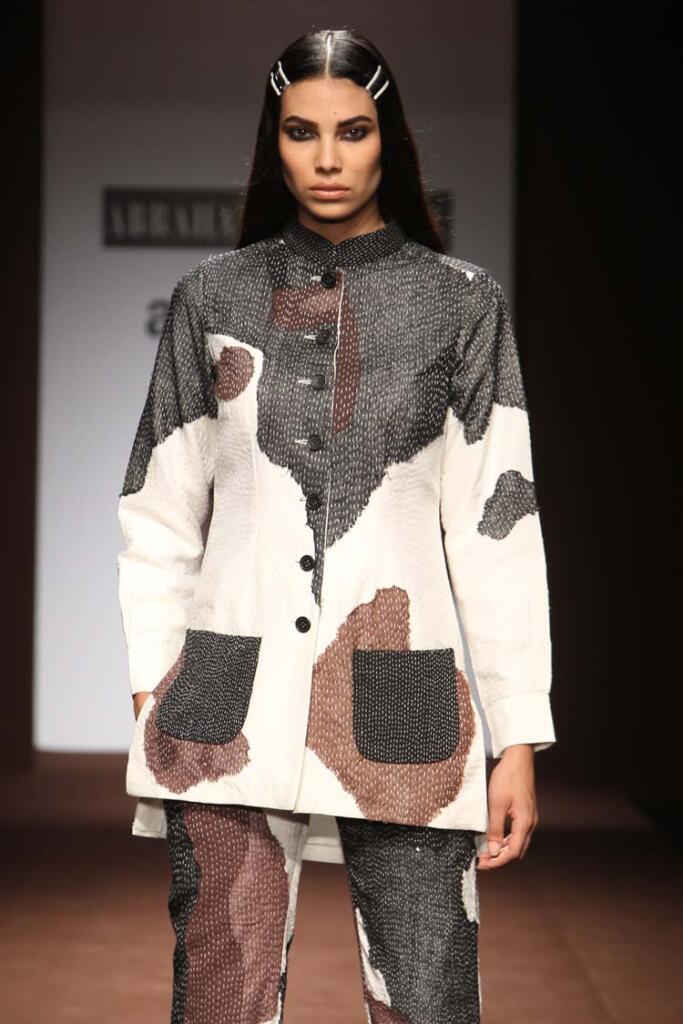
Abraham & Thakore, 2016
Future of the Loom
While the world cannot get enough of Bengal’s textiles, there are now serious threats to survival. Today, it’s not colonial policy but the very air and water that’s choking the industry. Debnath says, “The long cotton fibers required to produce high-count (fine) muslin are becoming difficult to grow in the face of global warming and increased pollution. If we don’t act on it now, in the next 10-15 years muslin may face extinction—and this time for good.”
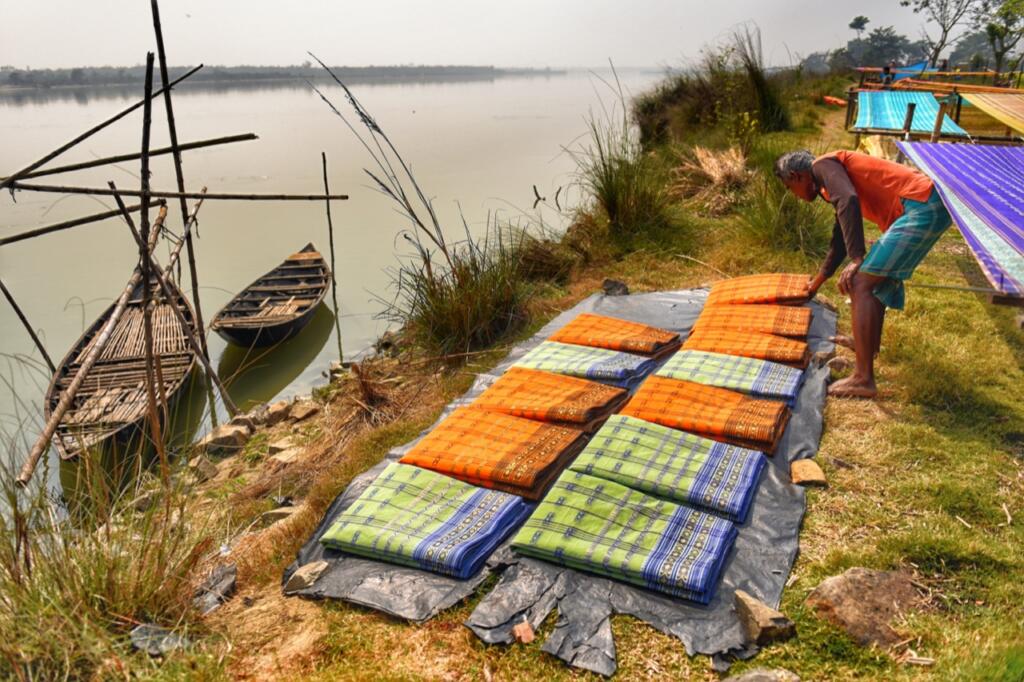
Photograph by Avishek Das for Tant Foundation
It’s fitting then, that the designers who have received so much from Bengal are now looking for ways to give back. In January this year, designer Pranay Baidya launched Tant Saree & Textile Foundation at the India Art Fair, which has been working to link the global market to the regional and rural weaver communities of West Bengal. Tant sarees are made from fine handspun yarn, either of Bengal cotton or Murshidabad silk, and are typically soft, light and perfectly suited to the humid climate of the region. Baidya and his team work with the weavers to reimagine these fabrics in pop colours and with innovative textile finishes. The collections that result are priced affordably and marketed around the world; the super-versatile fabric finds use in home décor too. As Baidya puts it candidly, “For all the talk of the art and design, we knew that we need to retail. It was very important for me to put together something that my clients would find value in, so we could keep the wheels of the weavers turning.”
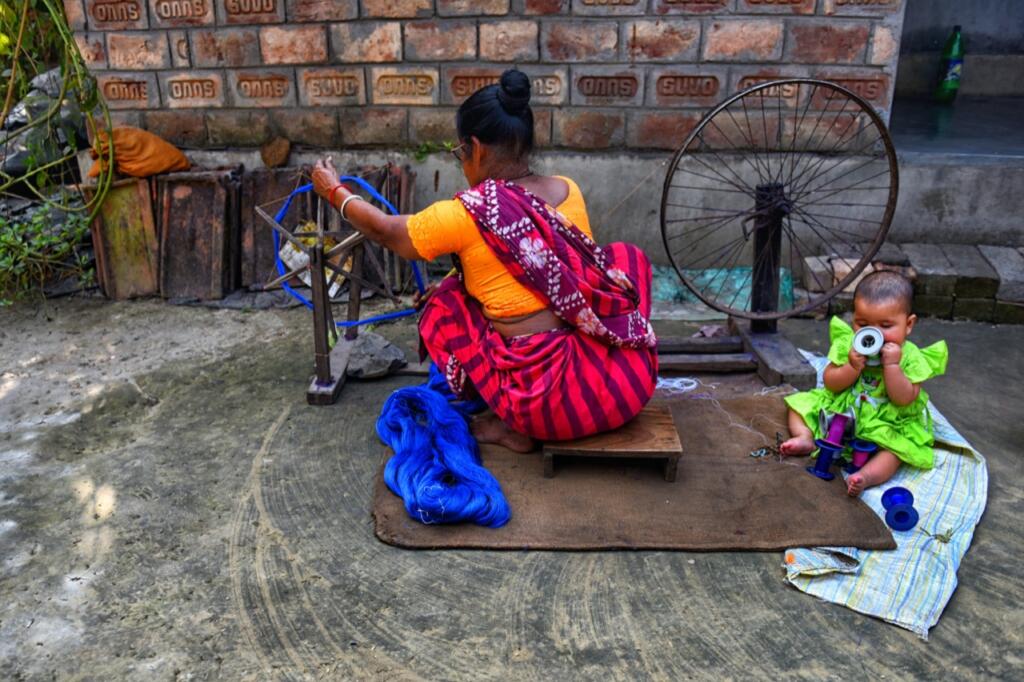
Photograph by Avishek Das for Tant Foundation
The Foundation’s moment came sooner than expected with the devastation caused by Cyclone Amphan in May 2020 and the closing of local markets thanks to COVID-19 and the national lockdown. Working remotely from his home in Delhi, Baidya says, “After Amphan, I would be on a video call with the weavers who would show me their looms and tell me what they were working on. Using our network around the world, me and my team would sell that very piece by the end of day.” Customers, he says, have been patient, empathetic with logistical and other hiccups caused by the pandemic.
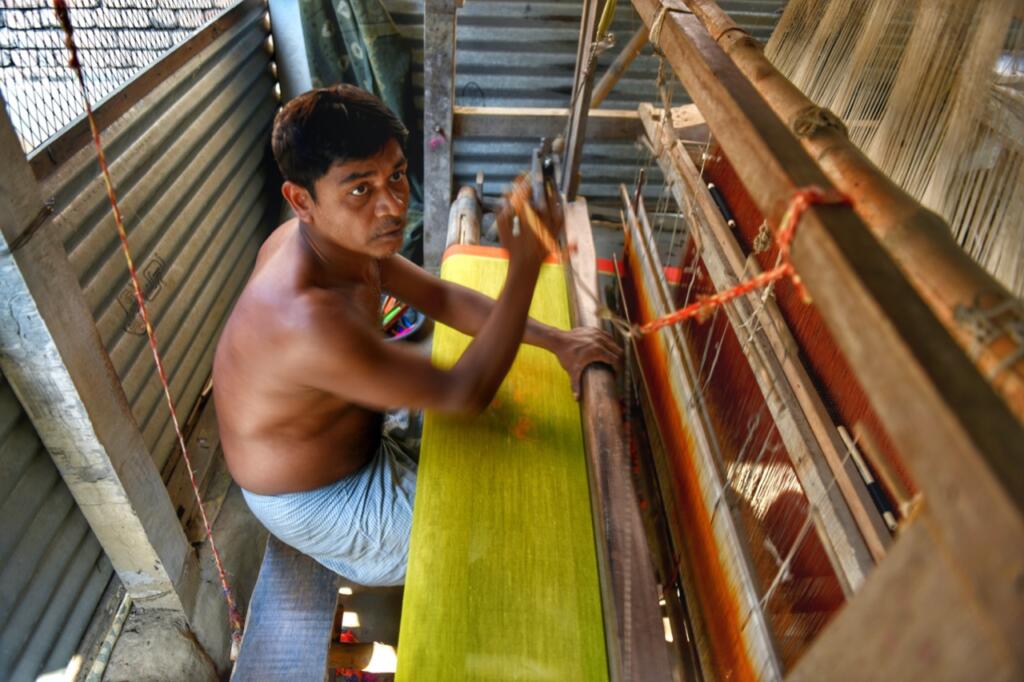
Photograph by Avishek Das for Tant Foundation
In the end, perhaps these values are our only hope of preserving what is most precious in ourselves and in our heritage. When it comes to its textiles, the great empire of Bengal has resiliently borne everything from artful cultivation and benevolent patronage to rampant commercialisation and mindless consumerism. It’s only by returning power to the people and land that we now have any hope of keeping this monumental legacy alive.
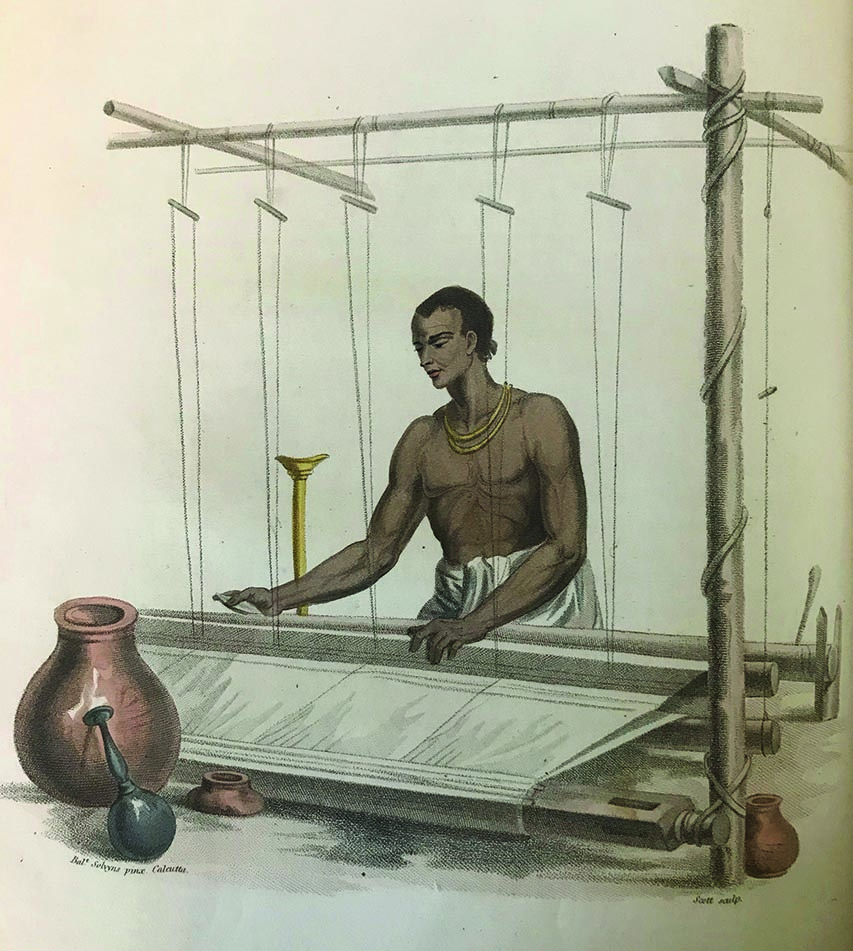
‘Tanutees or Weavers’ from ‘Costumes of Hindostan’ ©️Sarmaya Arts Foundation

